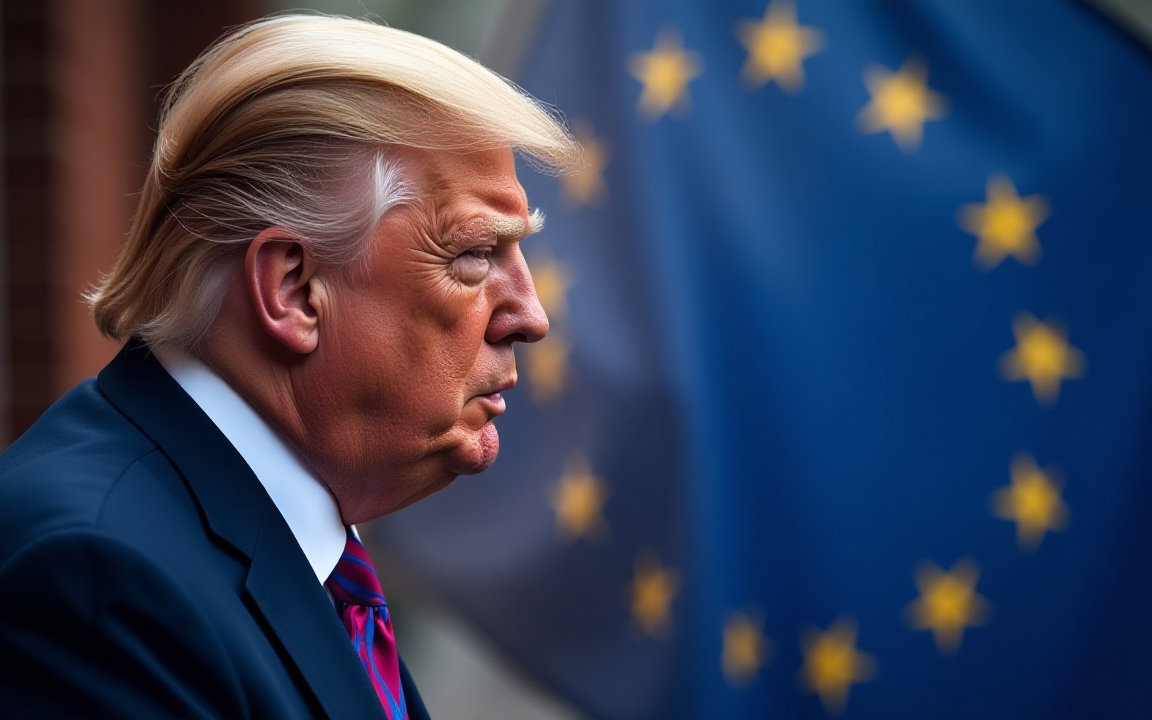President Donald Trump on Friday said he is recommending a 50% tariff on goods imported from the European Union, citing a lack of progress in trade talks with the 27-nation bloc.
The proposed tariffs would take effect on June 1 and mark a sharp escalation in tensions between Washington and Brussels.
Writing on his social media platform Truth Social, Trump said, “The EU has been very difficult to deal with…our discussions with them are going nowhere!”
The announcement came less than 30 minutes after Trump threatened Apple with a 25% tariff on iPhones if the company does not begin manufacturing them within the United States.
The dual threats reflect Trump’s increasingly aggressive trade posture as his administration races to strike deals before existing global tariff agreements expire in July.
Source: Truth Social
Brussels awaits scheduled call between EU and US trade representatives
The European Commission declined immediate comment, saying it would await the outcome of a scheduled call between EU Trade Commissioner Maros Sefcovic and US Trade Representative Jamieson Greer, set for 15:00 GMT.
The call is expected to be tense, as Greer reportedly plans to inform Sefcovic that recent EU proposals fall well short of US expectations.
The timing of Trump’s announcement surprised many in Brussels.
Just weeks earlier, the US had agreed to a 90-day pause on “reciprocal” tariffs, offering both sides time to negotiate.
That truce was meant to stabilize markets following Trump’s ‘Liberation Day’ announcement on April 2, which had already roiled investors by introducing a 20% tariff later revised down to 10%.
Currently, EU exports to the US are only subject to the new “baseline” tariff.
A shift to 50% duties would represent a dramatic departure and potentially provoke retaliatory measures from Europe.
Market reaction swift and negative
The financial fallout from Trump’s statement was immediate.
European stocks fell sharply, with the Stoxx Europe 600 index down 1.9%. Germany’s DAX dropped 2.3%, France’s CAC 40 fell 2.8%, and the UK’s FTSE 100 lost 1.3%.
Sectors most vulnerable to global trade volatility were hit hardest.
Banking stocks sold off heavily, with Deutsche Bank and Societe Generale losing 6% and 5.5% respectively.
Italian lender Unicredit was down 4.2%.
The regional Stoxx Banks index slumped 3.6% as investors assessed the indirect risks to lenders from a potential economic downturn triggered by tariffs.
Consumer cyclical and luxury goods sectors were also under pressure.
Swatch Group and Ray-Ban maker EssilorLuxottica were each down about 5%.
Bond markets, a typical haven during uncertainty, saw increased demand.
Germany’s 10-year bond yield fell 8 basis points to 2.56%, while yields on French, Italian, and Swiss bonds also declined.
Bond yields move inversely to prices, meaning investors were moving money into safer assets.
Economists warn of stagflation risks
Commenting on the potential consequences of such high tariffs, Chicago Federal Reserve President Austan Goolsbee said,
To go to 10% was already the highest tariff rate we’d had on the world in 90 years. To go to 50% is a completely different order of magnitude.
Speaking on CNBC’s Squawk Box, Goolsbee warned the tariffs could create a “stagflationary” scenario by increasing production costs and slowing output, all while raising consumer prices.
“That’s the Central Bank’s worst situation,” he added.
The EU was the second-largest buyer of US goods in 2022, importing nearly $351 billion worth of American products.
A 50% tariff could severely impact transatlantic trade flows and unsettle multinational corporations relying on open trade channels.
Trump’s broader strategy remains unclear
The Trump administration is currently in talks with over a dozen governments in an effort to renegotiate trade deals before automatic tariff resets take effect in early July.
However, several foreign officials have expressed concern over Washington’s unpredictable demands, noting the difficulty in making concessions when tariffs can be reimposed without warning.
Trump has long argued that European nations benefit disproportionately from trade with the United States.
His push for “reciprocal” tariffs seeks to align duty rates, though critics say such measures risk igniting full-blown trade wars and undermining global supply chains.
With less than two weeks remaining until the proposed 50% tariff would take effect, attention now turns to upcoming discussions between US and EU trade officials.
A failure to find common ground could deepen the rift between two of the world’s largest economic blocs.
The post European stocks fall as Trump proposes 50% tariff on EU imports; says talks with them ‘going nowhere’ appeared first on Invezz
